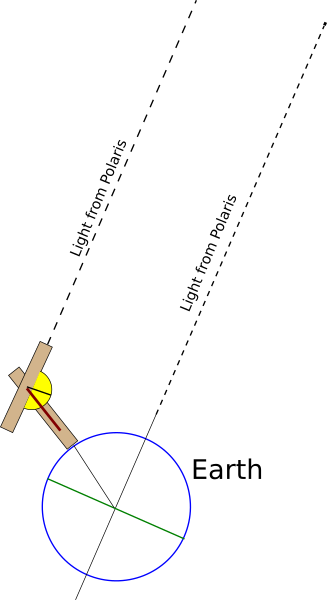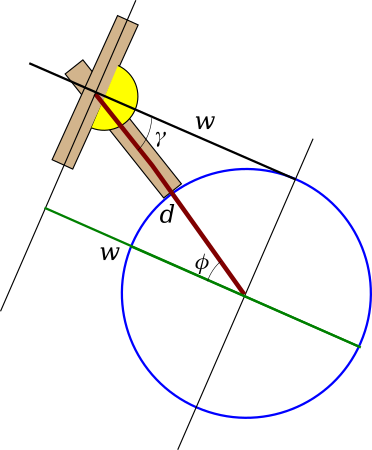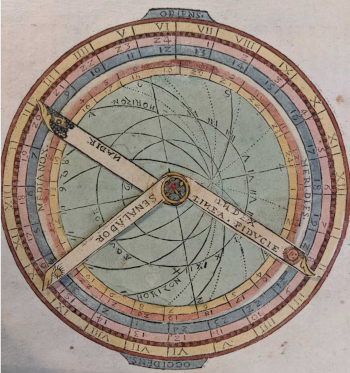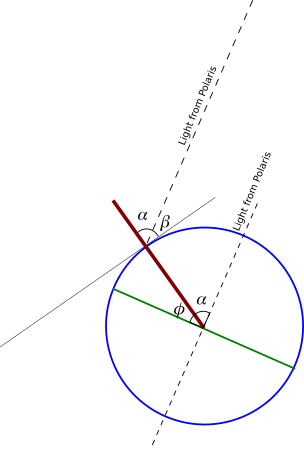

|
Measuring Latitude
An Introduction |
|
Prof. David Bernstein
|
| Computer Science Department |
| bernstdh@jmu.edu |



|
Measuring Latitude
An Introduction |
|
Prof. David Bernstein
|
| Computer Science Department |
| bernstdh@jmu.edu |










Recall that the Earth's axial tilt (i.e., the angle between it's rotational and orbital axes is about 23.5 degrees on average)



The latitude of the quadrant (which is what we are trying to measure) is denoted by \(\phi\).
The plumb bob points to the center of the Earth.
\(\cos(\gamma) = \frac{w}{d}\) and \(\cos(\phi) = \frac{w}{d}\) imply that \(\cos(\gamma) = \cos(\phi) \Rightarrow \gamma = \phi\)






The latitude of the observer (which is what we are trying to measure) is denoted by \(\phi\).
Because the light rays are parallel, the angle they form with the red line is the same and denoted by \(\alpha\).
The measured angle of elevation is \(\beta\).
\(\alpha + \phi = 90\) and \(\alpha + \beta = 90\) imply that \(\alpha + \phi = \alpha + \beta \Rightarrow \phi = \beta\),

